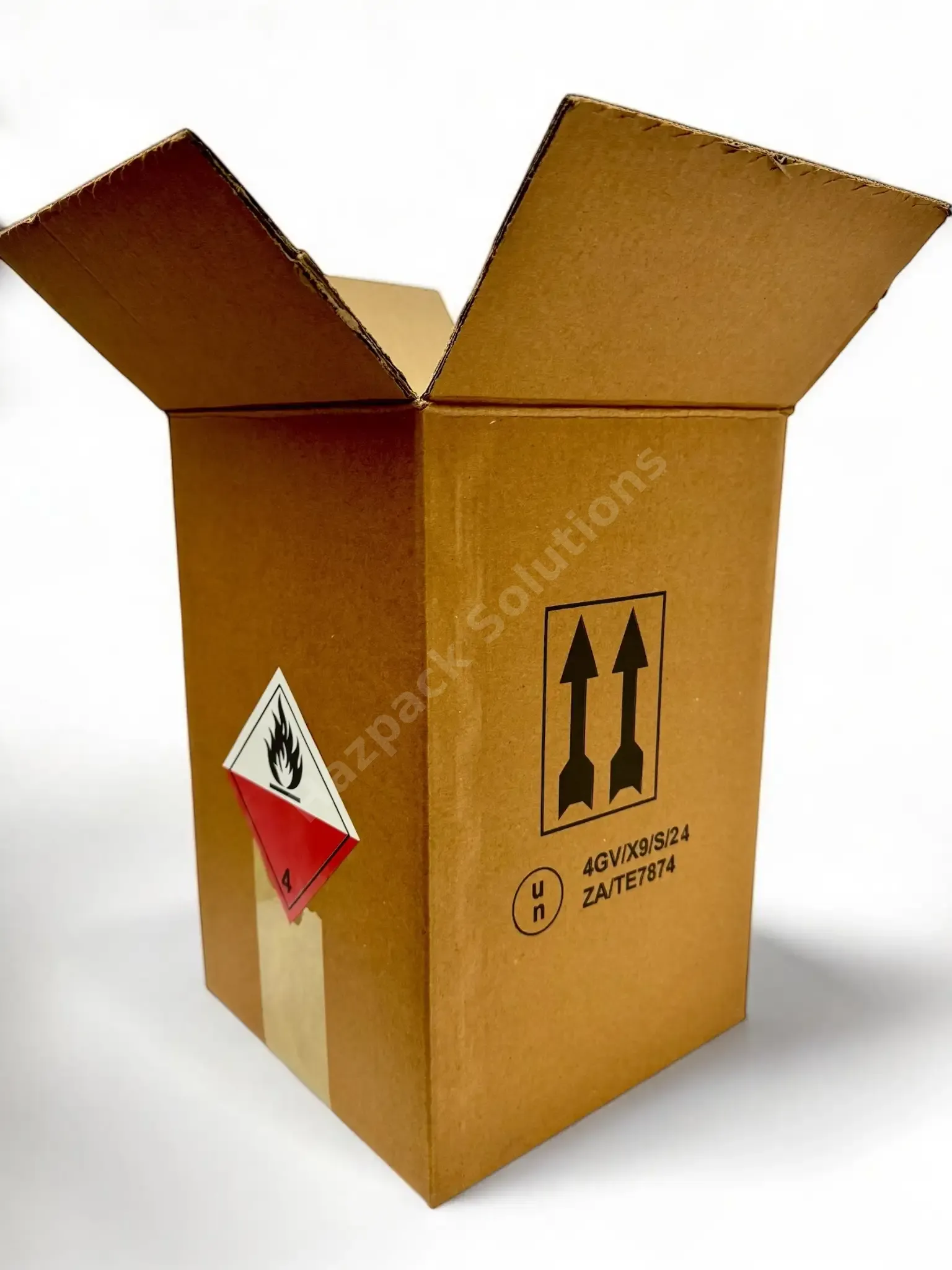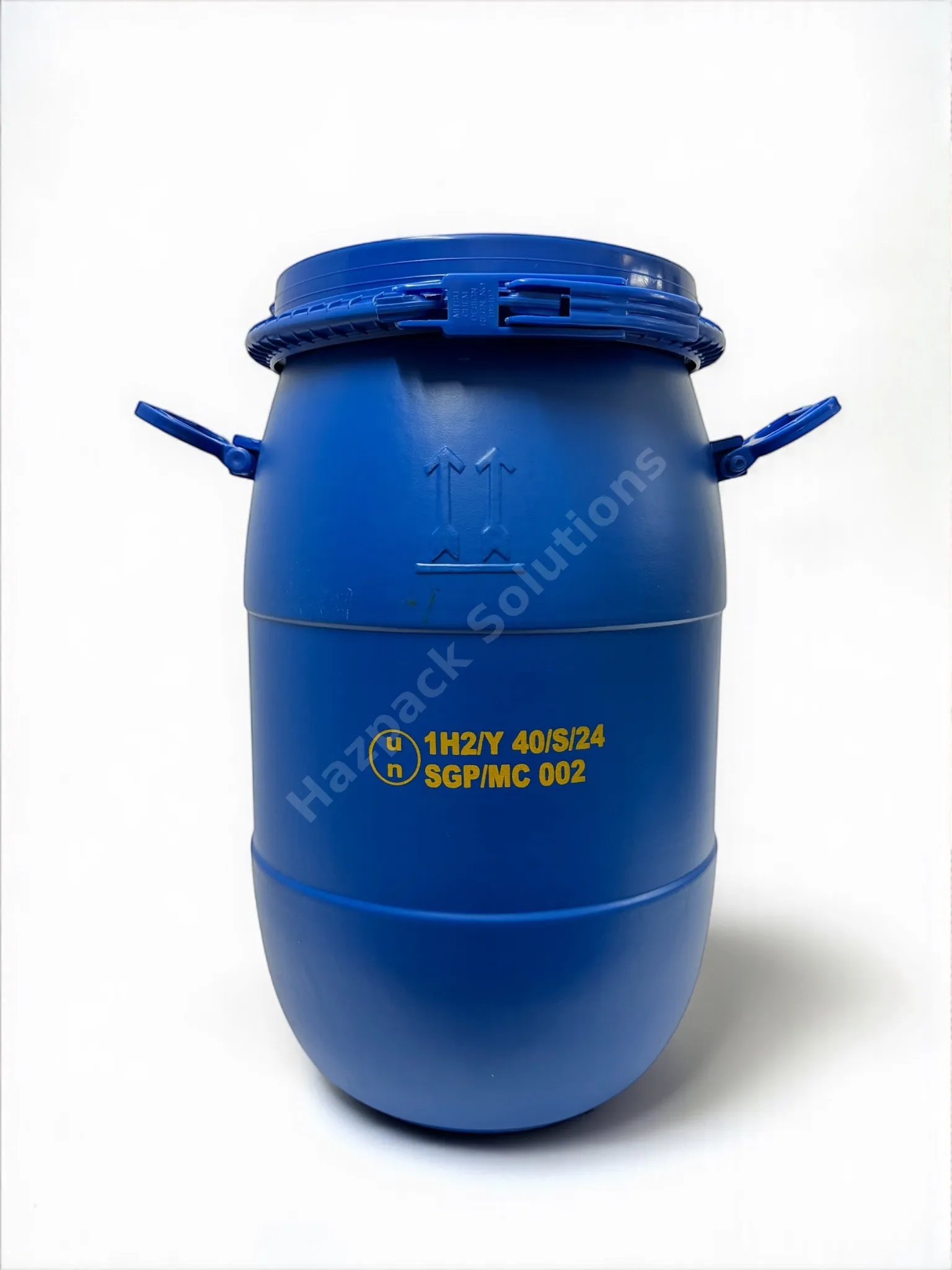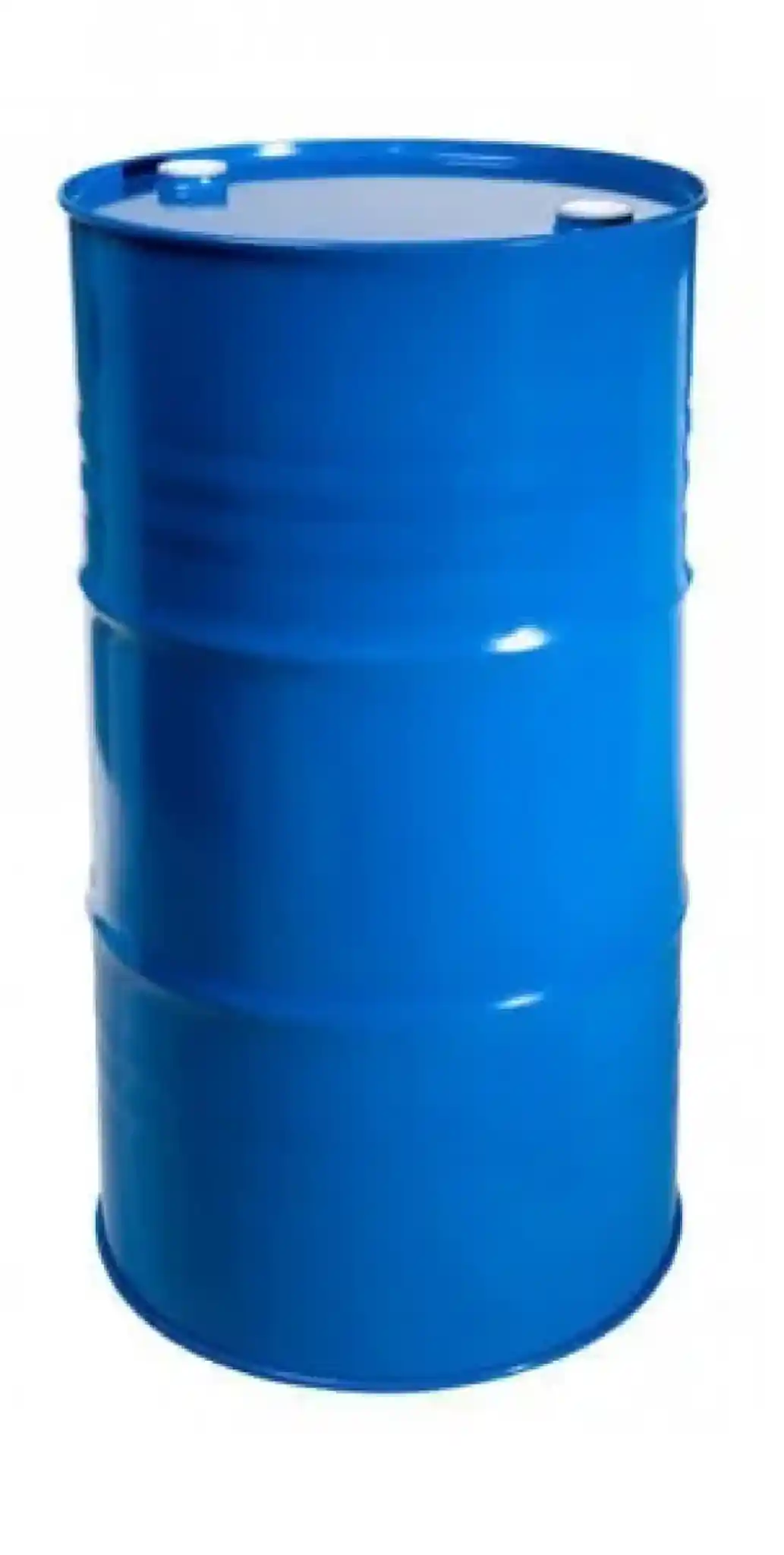Different Types of Packaging for Hazardous Goods
Explore certified packaging types including fibreboard boxes, steel and plastic drums, jerry cans, and more—designed for safe transport of industrial and dangerous goods.
| Packaging Type | Details |
|---|---|
 UN Approved Fibreboard Boxes (4G / 4GV)
UN Approved Fibreboard Boxes (4G / 4GV)
|
4G/4GV Boxes: Combine inner packaging like glass bottles with cushioning to absorb impacts. Benefits: Lightweight, versatile, and cost-effective for air/sea shipments. Use Case: Ideal for diagnostic kits, lab samples, and smaller DG items that need shock protection. |
 UN Certified Plastic Drums (1H1 / 1H2)
UN Certified Plastic Drums (1H1 / 1H2)
|
Material: HDPE—strong chemical resistance at a lighter weight than metal counterparts. Configurations: 1H1 closed-head for liquids; 1H2 open-head for solids or liquids. Volume Range: 20–220 L; ideal for detergents, oils, and solvents. Extra: Suitable for substances that may corrode steel drums. |
 UN Certified Steel Drums (1A1 / 1A2)
UN Certified Steel Drums (1A1 / 1A2)
|
Material: Cold-rolled steel; can include epoxy or phenolic linings for added corrosion resistance. Variants: Closed‑head (1A1) for liquids, open‑head (1A2) for solids and liquids. Use Case: Heavy-duty applications like flammables, paints, fuels. Features: Excellent structural strength, withstands rigorous handling. |
 UN Certified Fibre Drums (1G)
UN Certified Fibre Drums (1G)
|
Material: Multi-ply fibreboard—economical, recyclable, and lightweight. Capacity: Suitable for powders, granules, and non-liquid goods. Benefit: Lighter shipping weight with UN certification for solids. Note: Requires protective lining for liquids. |
 UN Approved Jerry Cans (HDPE)
UN Approved Jerry Cans (HDPE)
|
Design: Molded handles and screw caps; stackable; Volume: 5–35 L Ideal for: Portable storage of agrochemicals, lubricants, coolants. Advantage: Compatible with wide range of chemicals; can resist acids, alkalis, solvents. |
 Inner Packaging Options
Inner Packaging Options
|
Formats: Glass bottles, plastic containers, aluminum flasks. Protection: Use of absorbent materials, partitions, and cushioned inserts. Purpose: Safeguard flammable or corrosive contents during shipping. Notes: Often paired in combo packaging: inner container + outer fibreboard box. |
Key Considerations for Choosing UN-Approved Packaging
Selecting the appropriate UN-approved packaging for hazardous materials is crucial for safety and compliance. Here are the primary factors to consider:
- Compatibility with the Substance: The packaging material must not react with or be degraded by the dangerous goods it contains.
- Packing Group (PG I, II, or III): This indicates the hazard level of the substance. Packing Group I (high danger) requires the most robust packaging, while PG III (low danger) has less stringent requirements.
- State of Dangerous Goods: Whether the material is a liquid, solid, or granular will dictate the type of packaging and closure mechanism required.
- Required Capacity: Choose packaging with the appropriate volume to safely contain your specific quantity of goods.
- Closure Mechanism: Ensure the closure system (e.g., screw cap, bolt ring, crimp top) is secure and suitable for the contents and transport mode.
- UN Mark: Always verify the UN mark on the packaging. This code (e.g., 1A1, 1H2, 4GV) provides crucial information about the packaging's type, material, packing group approval, and testing.
Conclusion
Choosing the right packaging ensures that your hazardous and non-hazardous goods remain safe during transit and meet regulatory benchmarks like IATA, IMDG, and ICAO. Hazpack Solutions offers packaging that is tested, certified, and globally accepted.
Need a recommendation? Request a quote and let our team guide you to the most suitable packaging solution.